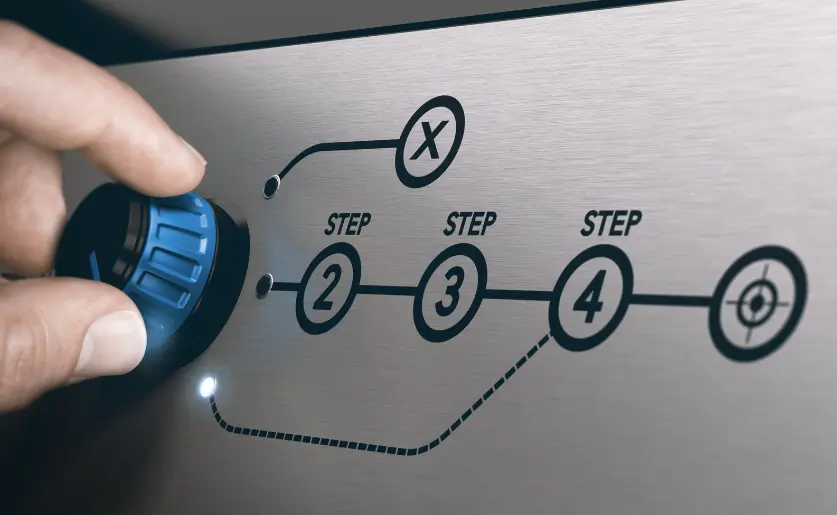“Efficiency is doing better what is already being done.”
Peter Drucker
The legal industry, known for its reliance on manual processes and extensive documentation, is undergoing a transformative shift with the advent of legal document automation. This innovation promises to streamline workflows, reduce human error, and enhance productivity. However, the journey toward adopting legal document automation is fraught with challenges. This article delves into these challenges, explores the solutions provided by advanced legal document automation software, and discusses how law firms and legal departments can navigate this evolving landscape.
The Complexity of Legal Document Creation

Creating legal documents is a time-consuming and complex process that demands precision and accuracy. Legal professionals spend a significant portion of their time drafting, reviewing, and managing documents. According to a survey by the American Bar Association, lawyers spend approximately 60% of their time on document-related tasks. This inefficiency not only affects productivity but also increases the risk of errors.
Legal document automation aims to address these inefficiencies by automating repetitive tasks and standardizing document creation. However, implementing such solutions can be challenging. One of the primary obstacles is the need for customization. Legal documents often require specific clauses and language tailored to individual clients and cases. Automation software must be flexible enough to accommodate these variations without compromising accuracy.
The Role of Advanced Automation Tools

Modern legal document automation tools leverage advanced technologies such as artificial intelligence (AI) and machine learning (ML) to enhance their capabilities. These tools can analyze large volumes of data to identify patterns and generate accurate legal documents. For instance, platforms like ContractPodAi and DocuSign CLM use AI to automate contract lifecycle management, from drafting and reviewing to execution and storage.
Natural Language Processing (NLP) is a key technology driving advancements in legal document automation. NLP algorithms can understand and interpret legal language, enabling the software to draft documents that meet specific legal standards. For example, NLP-powered tools can extract relevant information from existing documents and use it to create new ones, ensuring consistency and accuracy.
Moreover, legal document automation software often includes features such as template libraries, version control, and collaboration tools. These features enable legal teams to standardize document creation, track changes, and collaborate seamlessly. Platforms like HotDocs and LawGeex offer extensive template libraries that legal professionals can customize to meet their specific needs.
Ensuring Compliance and Security
Legal documents contain sensitive and confidential information, making compliance and security paramount concerns. Implementing legal document automation requires robust security measures to protect data from unauthorized access and breaches. According to a report by the International Association of Privacy Professionals (IAPP), data breaches in the legal industry can have severe consequences, including financial losses and reputational damage.
To address these concerns, legal document automation software incorporates advanced security features such as encryption, access controls, and audit trails. These features ensure that only authorized personnel can access sensitive information and that all actions are logged for accountability. For instance, DocuSign CLM provides end-to-end encryption and multi-factor authentication to safeguard legal documents.
Compliance with regulations such as the General Data Protection Regulation (GDPR) and the California Consumer Privacy Act (CCPA) is also critical. Legal document automation software can help ensure compliance by automating data protection processes and managing consent records. Tools like ContractWorks offer features that help organizations comply with GDPR by automating data retention and deletion policies.
Overcoming Resistance to Change

Despite the clear benefits of legal document automation, resistance to change remains a significant barrier to adoption. Legal professionals may be hesitant to embrace automation due to concerns about job security, the complexity of implementation, and the potential for disruption to existing workflows.
To overcome this resistance, it is essential to highlight the value of automation in enhancing, rather than replacing, the work of legal professionals. Automation frees up time for more strategic and high-value tasks, allowing lawyers to focus on providing expert advice and developing client relationships. A study by McKinsey & Company found that while 23% of a lawyer’s job can be automated, this automation can lead to improved job satisfaction and performance.
Training and support are also crucial in easing the transition to automation. Legal document automation providers often offer comprehensive training programs and resources to help users become proficient with the software. For example, iManage provides extensive training materials and support to ensure a smooth implementation process.
Practical Implementations and Business Benefits

Several legal firms and departments have successfully implemented document automation to streamline their workflows. For instance, Clifford Chance, a leading global law firm, uses AI-driven document automation to reduce the time spent on routine tasks and improve accuracy. By automating contract generation and review, the firm has enhanced efficiency and reduced the risk of errors.
Similarly, Baker McKenzie has integrated legal document automation into its operations to handle high volumes of transactional work. The firm’s automation tools enable quick and accurate document generation, allowing lawyers to focus on more complex and strategic tasks. This integration has resulted in significant time savings and increased productivity.
The benefits of legal document automation extend beyond efficiency gains. Automating document-related tasks can lead to cost savings, improved compliance, and enhanced client satisfaction. By reducing the time spent on administrative tasks, legal professionals can provide more value to their clients and deliver services more efficiently.
Conclusion
Legal document automation represents a significant advancement in the legal industry, offering solutions to the inefficiencies and challenges associated with traditional document creation. By leveraging advanced technologies such as AI and NLP, legal document automation software enhances accuracy, ensures compliance, and improves productivity.
For legal firms and departments, adopting document automation is a strategic move that can drive business growth and enhance client satisfaction. Overcoming the challenges of customization, security, and resistance to change is crucial to realizing the full benefits of automation.
As the legal industry continues to evolve, embracing automation will be essential for staying competitive and delivering high-quality legal services. The future of legal work lies in the seamless integration of technology and human expertise, enabling legal professionals to focus on what they do best: providing expert legal advice and advocacy.
References:
- American Bar Association – Survey on Legal Technology
- Return Path – The Hidden Metrics of Email Deliverability
- ContractPodAi – AI-Powered Contract Management
- DocuSign CLM – Contract Lifecycle Management
- HotDocs – Document Automation Solutions
- LawGeex – AI-Powered Contract Review
- IAPP – Data Protection in the Legal Industry
- ContractWorks – GDPR Compliance
- McKinsey & Company – Automation in the Legal Industry
- Clifford Chance – Legal Innovation and Technology
- Baker McKenzie – Legal Technology Integration


